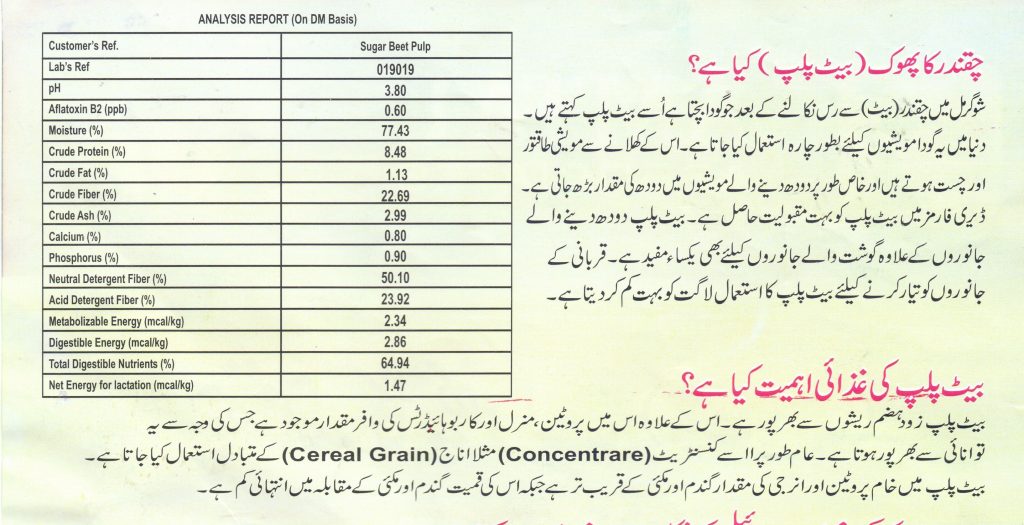
Sugar Beet pulp is a highly digestible fiber source that is a byproduct from the processing of sugar beet which is used as fodder for horses and other livestock. Beet pulp is the fibrous material left over after the sugar is extracted from sugar beets. Beet pulp is rich in fiber and is unique in its form as it is soluble fiber and highly digestible. Beet pulp can be used effectively as a supplement for gestating or lactating cows, as an ingredient in backgrounding diets or as a replacement for roughage in finishing diets. Beet pulp is relatively low in crude protein (8 percent), but relatively high in total digestible nutrients(72 percent).

Research indicates that wet beet pulp can be included at up to 40 percent of the diet. Wet beet pulp can be ensiled successfully with a variety of other feedstuffs as a means to facilitate storage. Best results were obtained with the addition dry beet pulp or wheat middlings. Addition of sugar beet tailings or dry feedstuffs such as wheat middlings or corn improved the quality of the silage through the addition of fermentable carbohydrate. Optimum moisture content for these silages is approximately 65 percent.
Beet pulp is available as either a wet (pressed shreds) or dry byproduct (shreds or pellets). Because beet pulp contains large amounts of digestible fiber, it usually does not create a problem with acidosis for cattle consuming beet pulp. Dry pelleted pulp should be stored in bins or commodity sheds to protect it from moisture and rodents. Wet pulp can be stored effectively in silage bags or in trench or bunker silos.
